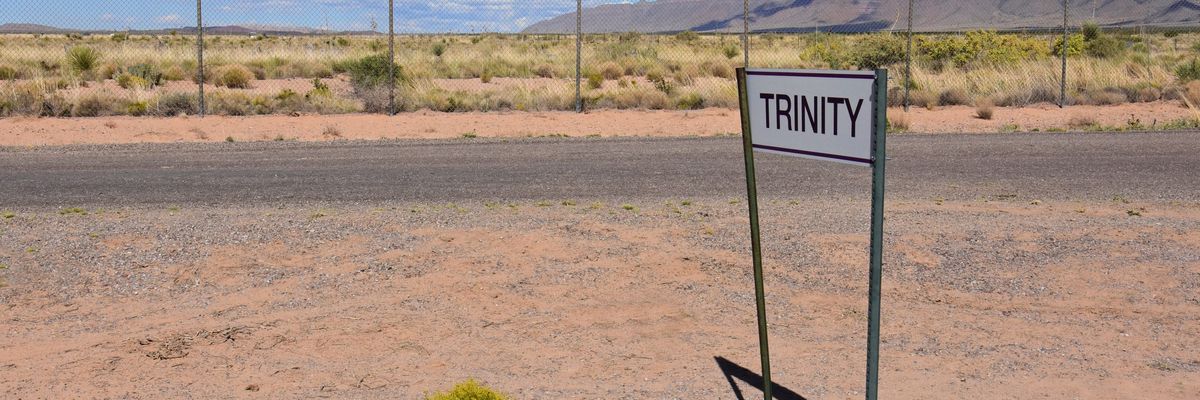Twenty-four years ago, the Comprehensive Nuclear-Test-Ban Treaty was adopted and opened for signature. Despite 71 signatures that day and 168 ratifications since, the treaty still has not entered into force. Now frustration grows over the lack of progress while whispers about possible new nuclear tests circle the globe. Decades of work and two solid years of negotiations went into creating the CTBT, and those efforts — and the security that would come from a global ban on all explosive testing — are now at risk.
Since the first atomic test in 1945, 2,056 nuclear tests have been conducted by eight different nations, providing fuel for the fire that was the nuclear arms race. The United States and the former Soviet Union were the most prolific testers, pushing out masses of radioactive particles with every blast. Those particles contaminated drinking water and livestock, and were directly inhaled by humans, leading to cancer, miscarriages, and congenital illnesses from which people around the world have suffered for decades.
Global support for a ban on nuclear testing grew until the near disaster that was the Cuban Missile Crisis provided a catalyst for the negotiation of the Limited Nuclear Test Ban Treaty. Signed by the United States, United Kingdom, and Soviet Union in 1963, the treaty banned nuclear testing in the atmosphere, outer space, and underwater. The LTBT stopped short of a total ban because, at the time, there were no clear mechanisms for verifying the absence of underground testing.
Three decades passed before that would change. Having finally developed the multi-tiered mechanisms to detect nuclear tests, even at very low yields, countries came together to negotiate the CTBT. As designed, the treaty will help constrain nuclear weapons development and improvements, and prevent further environmental and human suffering.
In order for the treaty to enter into force, eight of the remaining Annex 2 countries have to ratify the CTBT, including China, Egypt, India, Iran, Israel, North Korea, Pakistan, and the United States.
The U.S. Senate voted on CTBT ratification on October 13, 1999 and while Americans overwhelmingly supported the agreement, the treaty fell short of the two-thirds majority needed for advice and consent. At the time, Senate treaty opponents voiced concern about the reliability of the U.S. nuclear arsenal in the absence of nuclear testing. There were also concerns about the treaty’s still-evolving verification tools.
Those fears have since been addressed. The success of the Stockpile Stewardship Program allows U.S. scientists to conduct advanced simulations and experiments to better understand our nuclear stockpile and assist in modernizing these weapons. The treaty’s verification regime, the International Monitoring System, is able to detect nuclear explosions, even very low-yield blasts, anywhere on the planet through its 337 monitoring facilities. Once the treaty enters into force, this system will be accompanied by on-site inspections that can help ensure states are complying with the treaty.
Other Annex 2 states seem to be in no hurry to ratify the agreement either. China has indicated that it is waiting for the United States to move first and will then follow suit. If that occurs, perhaps other Annex 2 states will follow. Pakistan is open to a regional moratorium on testing that if implemented could eventually lead to CTBT accession in South Asia. North Korea closed its nuclear test site, Punggye-ri, in 2018 and claimed it would join international efforts toward a ban on nuclear tests. It has not followed through on this commitment yet.
Israel has signed the CTBT and hosts stations and a laboratory to support the IMS’s work, but is reportedly hesitant to ratify the treaty due to concerns over the intrusiveness of the treaty’s on-site inspection procedures. Egypt has hinted that its accession to any further arms control treaties is contingent upon Israel joining the Nuclear Non-Proliferation Treaty. Israel counters by saying the CTBT and NPT are separate and it is counterproductive to link the two treaties. Prior to U.S. withdrawal from the JCPOA, there was hope Iran might ratify the CTBT, but it seems unlikely now without a resumption in diplomacy.
Even as Annex 2 political foot-dragging continues, the CTBT has helped establish a strong international norm against nuclear testing. Its near universality has created international condemnation for the tests that have come after 1996 — those conducted by India and Pakistan in 1998, and North Korea five times since 2006.
While a majority of nations continue to abide by the treaty’s norm against nuclear testing, that might not last forever. In 2017, Executive Secretary of the Comprehensive Nuclear-Test-Ban Treaty Organization Lassina Zerbo said that “only an in-force CTBT will establish a legally binding norm […] bring a permanent end to the destabilizing practice of nuclear testing and constitute a firm barrier to a resumption of the nuclear arms race.” Modernization by nearly every nuclear weapon state, coupled with whispers about low yield testing and overt discussions in the Trump administration about a demonstration nuclear test will continue to erode the anti-testing norm unless the treaty actually enters into force.
Countries and citizens around the world need to put significant pressure on the Annex 2 nations to sign and ratify the CTBT, finally bringing it into force. Resumed nuclear testing could result in a tit-for-tat escalation, which could lead to an arms race or even nuclear use. The United States has the most extensive testing record by far. If Washington decided to test again, other countries would certainly follow suit, since they have the most to gain from a world with no restraints on nuclear testing.
In that process, millions of people could suffer, and the world would become a more dangerous place. That doesn’t suit the security interests of the United States or any country, for that matter. As the world collectively struggles with all that has happened in 2020, adding the threat of nuclear tests would be ludicrous. That is why, nearly a quarter of a century after its creation, it is time to finally bring the CTBT into force.















